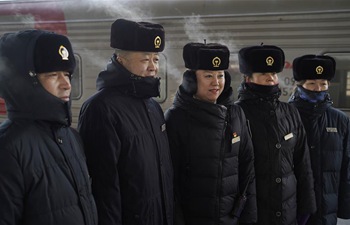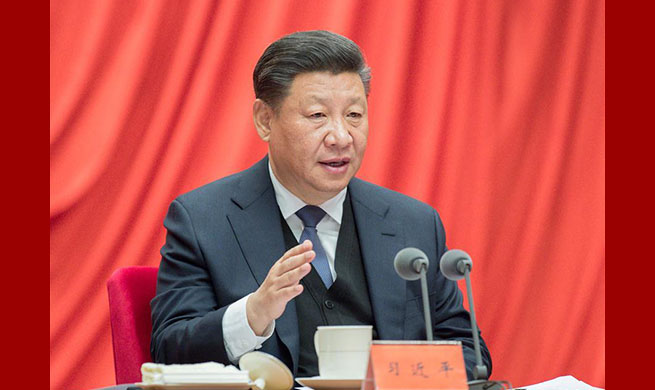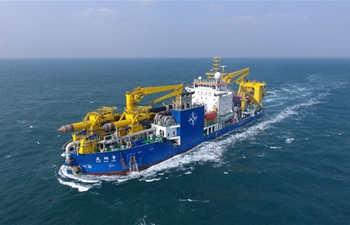BEIJING, Jan. 12 (Xinhua) -- China's biggest airport in passenger throughput saw another busy yet greener year in 2018. Beijing Capital International Airport transported over 100 million passengers last year, second only to Hartsfield-Jackson airport in Atlanta, United States.
Besides the record performance are a string of steps to conserve energy, such as using more clean energy and optimizing lighting. The airport aims to put in place nearly 3,000 high-pole energy-conserving lights and build photovoltaic systems in parking lots by 2020.
The airport is one of four Chinese firms honored for their pioneering efforts in helping fulfill the country's green growth pledge by pushing ahead with the latest green technologies, supply chains, management philosophies, and evaluation mechanisms.
Other energy-conservation role models include air-conditioning giant Gree, which is devoted to developing energy-saving technologies, reducing carbon dioxide emissions by 6.5 million tonnes from 2015 to 2017 with green refrigerants. Wind power firm Xinjiang Goldwind Sci & Tech had over 80 percent of its suppliers ink green supply chain agreements, while dairy products maker Meng Niu managed to reduce water consumption per unit by 1.03 percent annually using a modern energy management system.
"Chinese firms are increasingly aware of the importance of green growth, not only for the sake of corporate social responsibility but also for higher-quality and sustainable development," said Zou Ji, president of the Energy Foundation China, which co-launched the Climate Leader Plants program with the China Council for an Energy-Efficient Economy (CCEEE).
The program aims to share experiences of Chinese corporate pioneers in green efforts and promote the development of a green society and economy.
Going green will bring benefits and won't hinder growth, Zou added.
The latest CCEEE report showed that China has established a sound supervision system and policy framework on energy conservation, with technological advances playing an increasingly important role in the efforts.
The country's top economic planner started a campaign in 2017 to encourage enterprises in China to commit to energy conservation and emission reduction. The country is also piloting an online system to monitor the energy consumption of over ten thousand major energy-consuming firms.
By 2017, China's carbon intensity, or the amount of carbon dioxide emissions per unit of GDP, had dropped about 46 percent from 2005 levels, meeting the target of a 40-45 percent drop by 2020.
China has laid a solid foundation for fulfilling its pledge to halt the rise of carbon dioxide emissions by around 2030, Xie Zhenhua, the country's special representative for climate change affairs said last November.

















